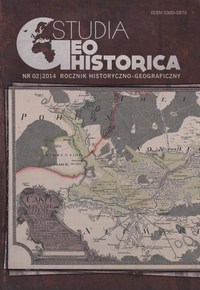Kształtowanie sieci młynów wodnych na przykładzie powiatu konińskiego (ok. 1300–1550)
The formation of a network of water mills on the example of the Konin district (approx. 1300–1550)
Author(s): Tomasz ZwiązekSubject(s): Historical Geography, Economic history, Middle Ages
Published by: Polskie Towarzystwo Historyczne
Keywords: Greater Poland;Middle Ages;historical economy;watermills;agrarian structures;Konin;Koło;windmills;GIS;historical geography,;HGIS
Summary/Abstract: The article concerns the subject which has been so far poorly studied, namely the process of the formation of a network of water mills. Th e studies conducted up till now have either been constructed on an uncertain source basis (Zofia Podwińska) or they have been too general to capture the small changes which could also significantly affect the increase or decline in the number of milling facilities (Rafał Kubicki). The author of the present paper made an attempt at describing detailed mechanisms governing this phenomenon on the example of the Konin district in the period of the late Middle Ages and the Early Modern Times. The source basis was provided by lists of extraordinary conscriptions, inventories of bishops’ and royal properties, records of the lands tribunals, the diplomatic material or even supplications directed to the 16th century chapter of Gniezno. Besides, the oaths of the lands tribunals published in Wielkopolskie roty sądowe (Court oaths in Wielkopolska region) were also fairly extensively used. The present article analyzes not only the development of a network of water mills itself but also the economic and natural factors that could have created it. Moreover, on the example of the Konin district analyses were made related to the development of properties belonging to the lords (on the example of the Brudzewski family of Pomian coat-of-arms) and royal properties.
Journal: Studia Geohistorica
- Issue Year: 2014
- Issue No: 2
- Page Range: 118-142
- Page Count: 25
- Language: Polish

